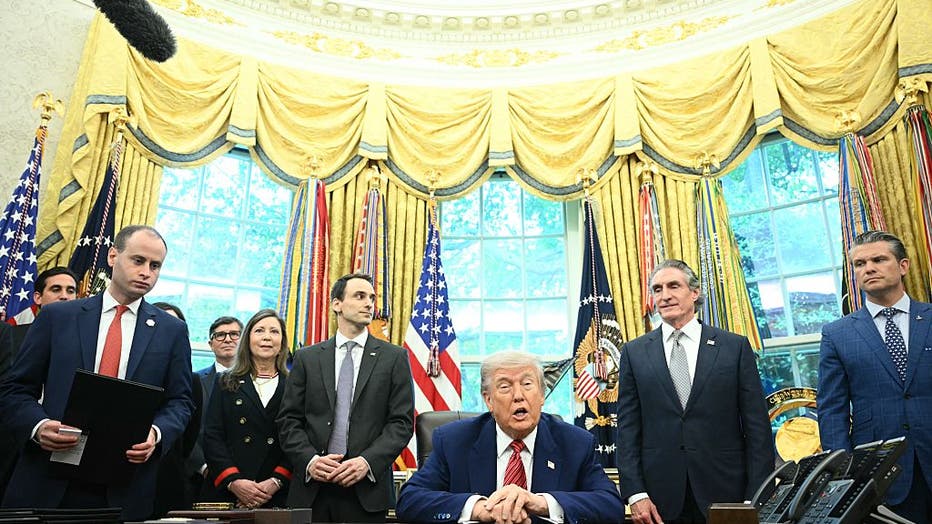Trump signs orders to speed up nuclear reactor construction at federal sites

Trump signs multiple EOs on nuclear energy
On Friday, President Trump signed multiple executive order actions relating to nuclear energy and power for AI here in the US.
WASHINGTON - President Donald Trump on Friday signed a sweeping set of executive orders designed to dramatically accelerate nuclear reactor construction, focusing on federal sites and reforming the Nuclear Regulatory Commission (NRC) to speed up licensing timelines.
The move is part of a broader push by the administration to meet rapidly growing energy demands driven by artificial intelligence and domestic manufacturing expansion. A senior White House official said the goal is to have a new nuclear reactor operating before Trump leaves office in early 2029.
The executive actions include reforms across four fronts: testing and construction at Department of Energy (DOE) labs, a new partnership with the Department of Defense (DOD), restructuring of the NRC, and expansion of uranium mining and enrichment in the U.S.
Why is Trump invoking emergency powers for nuclear energy?
The backstory:
Trump’s first order speeds up testing of advanced nuclear reactors at DOE national laboratories and launches a pilot reactor construction program over the next two years. A second order establishes a joint effort between DOE and DOD to build and operate nuclear reactors on federal sites.
The third and most controversial order targets the Nuclear Regulatory Commission, requiring it to cut reactor license approval times to 18 months—a dramatic shift from the current five-year timeline. The NRC has been under congressional mandate to lead in approving advanced reactor technologies, but now faces pressure to act faster with limited resources.
A fourth order focuses on boosting domestic uranium mining and enrichment, citing national security and fuel independence.
What they're saying:
Michael Kratsios, Director of the White House Office of Science and Technology Policy, told reporters Friday that U.S. developers "have run into brick walls when it comes to nuclear technologies."
"With these actions, the president has shown the world that America will build again, and the American nuclear renaissance can begin," Kratsios said.

US President Donald Trump, with Secretary of Defense Pete Hegseth (R) and Secretary of the Interior Doug Burgum (2nd R) prepares to sign executive orders in the Oval Office of the White House in Washington, DC, on May 22, 2025. (Photo by MANDEL NGAN/AFP via Getty Images)
The White House emphasized that the NRC would remain the key regulator for non-federal reactors, but not for facilities built on DOE or DOD lands. That responsibility would fall to those agencies under their own statutory authorities.
What’s next for U.S. nuclear policy?
The other side:
Critics argue that pushing the NRC to accelerate license reviews could compromise safety and strain an already understaffed agency. Others caution that federal site construction alone may not resolve cost and fuel supply barriers that have slowed nuclear development for decades.
Big picture view:
Despite bipartisan support for nuclear power as a zero-emissions energy source, new reactor construction has lagged due to financial, regulatory, and logistical challenges. Trump’s orders mark the most aggressive federal push for nuclear expansion since the early 2000s.
This article is based on original reporting from Axios, which first detailed the executive orders signed by President Trump on May 24, 2025. Additional context was provided by the White House, U.S. Department of Energy, and the Nuclear Regulatory Commission. Quotes from officials, including OSTP Director Michael Kratsios, were taken from a White House media briefing.
The Source: This article is based on original reporting from Axios and Reuters. Additional context was provided by the White House, U.S. Department of Energy, and the Nuclear Regulatory Commission. Quotes from officials, including OSTP Director Michael Kratsios, were taken from a White House media briefing. This story was reported from Los Angeles.

